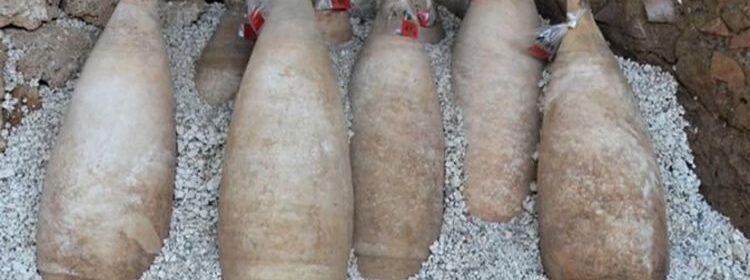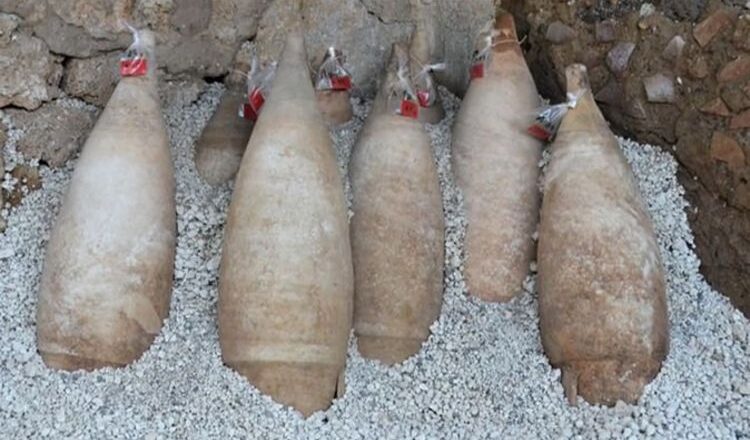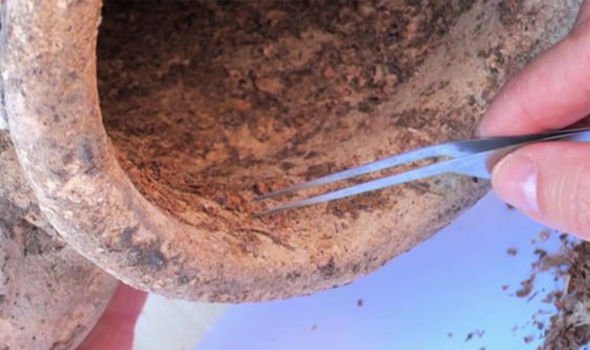Archaeologists discovered “the ketchup of the Roman world” buried in Pompeii for almost 2,000 years

Pompeii: How archaeologists found ‘ketchup of Roman Empire’ buried for 2,000 years
During a documentary, ARCHAEOLOGISTS discovered “the ketchup of the Roman world” buried in Pompeii for nearly 2,000 years in what was called “an incredible discovery.”
In the 79 AD, in one of the deadliest volcanic eruptions ever in Mount Vesuvius, a stratovolcano in modern-day Italy, sprawling a cloud of superheated tephras and gasses to a height of 21 miles.
At 1.5 million tonnes per second, the natural disaster dropped the molten rock, pulverised pumice and hot ash, obliterating the Roman settlements and buried thousands under the burning rubbles. However, the horrific incident also covered the city with a blanket of thick material, leaving the opportunity for discovery to this day.
One such discovery was made in 2014, thanks to the work of Italian archaeologists, which led to the reproduction of a recipe for a 2,000-year-old sauce called Garum.
Channel 5’s 2019 series “Ancient Mysteries” explained how the discovery was made.
“The secrets of why Romans consumed so much of it have remained elusive because it had been thought that the original recipe for garum had been lost to time.

“But now it’s being resurrected thanks to an incredible discovery in one of ancient Rome’s most fascinating lost cities – Pompeii.
“In 2014, Professor Dario Bernal-Casasola and his team from the University of Cadiz began excavating at Pompeii in search of garum frozen in time.”
The series continued, explaining how the recipe was deciphered. It added: “In an incredible stroke of luck, the team found a garum store and, inside, were 2,000-year-old traces of the sauce itself.
“Now, for the first time ever, an actual sample of garum could be analysed to find out exactly what it was made of with experimental scientist Dr Victor Pallassios.

“Through microscopic analysis, the team found pollen grains revealing that a selection of herbs were used in Pompeii to flavour the sauce. “And the sample told them exactly what species of fish was used.”
Dr Victor Pallassios then revealed the exact ingredients used to make the sauce. He said: “Surprisingly, even after 2,000 years, it still smells of garum, it smells of fish.
“The spices are characteristic of the Mediterranean – rosemary and coriander.
“The remains have allowed us to study the bones in order to know the species that they were using, we know it was being produced with anchovies.”

Dr Benedict Lowe from the University of North Alabama explained why the discovery was so important.
He added: “Garum is found everywhere, in every house, regardless of wealth.
“Everybody was eating it, this was the ketchup of the Roman world.” Like the modern fermented soy product soy sauce, fermented garum is a rich source of umami flavouring, including monosodium glutamate.
When mixed with wine, vinegar, black pepper, or oil, garum enhances the flavour of a wide variety of dishes, including boiled veal and steamed mussels. However, it was also used by peasants to improve the taste of bread.